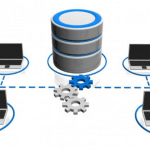We all know that technology is constantly evolving. As technology changes it enables your business to keep up with the growing needs of consumers. Today’s customers demand flexibility, convenience, and simplicity. By knowing how point of sale (POS) systems are evolving, you can better serve your business, employees, and of course, consumers.

Keep reading to learn about 5 tech trends that are changing POS systems. By understanding these changes you can ensure that you have the right systems and tools to provide a top-notch experience for each of your customers.
1] On-Demand Purchases
An advanced, connected, and high-tech world has turned us into impatient consumers. Online shopping has become so popular because it’s immediately. We can quickly browse and order the items we want, and it only takes a few days to receive them. On-demand purchasing also stands true in brick and mortar stores.
Customers don’t want to wait in line to complete their purchases. Long lines are frustrating and can sometimes lead to lost purchases, which in the end minimizes your sales numbers.
One of the best ways to offer on-demand purchasing is to use a POS system that offers mobile capabilities. Today there are many systems that allow sales associates to complete purchases using a tablet or some other connected device. This enables customers to make purchases from anywhere in the store.
By using a POS system that offers on-demand purchasing, you can offer positive customer experiences that leave shoppers 100% satisfied.
2] Mobile Wallets
In the past cash was the only way to pay for purchases, but then debit and credit cards came along, offering a more convenient way to pay. While we’ve recently had the creation of EMV chip cards, plastic is slowly but surely losing its top spot. According to a study conducted by BI Intelligence, by 2020, in-store mobile payments will reach $503 billion.
As mobile technology continues to become increasingly popular, more consumers are using mobile-based payment options. With services such as PayPal, Apple Pay, and Android Pay, consumers are now using just their phones to pay for an in-store item.
Mobile wallets will eventually become a payment norm, but by offering this payment option now, you’ll be well ahead of the curve. With mobile wallets, you can minimize transaction times and offer a huge convenience to customers. This added flexibility is a huge deal for staying ahead of your competitors.
3] Big Data & Analytics
POS systems are able to do much more than process sales and payments. When used properly they’re also able to collect a lot of data. As trends change and technology improves, analysis abilities and data collection capabilities change as well. While POS systems can obviously collect payment details, they can also be used to collect customer data, stock levels, and even employee productivity statistics.

When this data is combined with other systems, you can analyze trends across your entire operation. This makes it much easier to plan for the future by making strategic business decisions. You can also use this data to improve levels of customer service and to increase sales.
Businesses that exceed customer service expectations and sales quotas are most likely to be extremely successful.
4] Cloud-Based Systems
Chances are you’ve heard of cloud computing before, and you may even be a user of a cloud-based system. Over the years cloud technology has made its way into the POS system world. Without a cloud-based POS system, you’re stuck storing your data on an internal network on physical servers and hard drives. While this isn’t the worst way to store data, it’s not the most ideal.
Using a cloud-based system you’ll have the ability to access business data from anywhere in the world. This gives you greater control over your business and enables you to make smarter business decisions. Cloud technology allows you to have total access to pertinent business data such as.
- Inventory and stock quantities
- Sales numbers
- Customer behavior
- Employee data
With this data, you can provide the most up-to-date sales figures when meeting with an investor or you can order products while on the go to ensure that your inventory is stocked with top-selling items at all times.
5] Artificial Intelligence
Once constrained to science fiction movies, artificial intelligence has become a reality. As it’s often called, AI uses machine learning in order to perform tasks that usually require human intelligence and intervention. Today artificial intelligence can be used for predictive text, sending emails, language translation, and speech recognition.
For years AI has been used to improve marketing. Today the technology is making its way into the retail and shopping industries, allowing customers to shop through a virtual assistant. As AI products such as Siri and Cortana become even more popular, we can expect the technology to become more widespread for businesses and retailers.
Conclusion
As tech and retail trends continue to change, you can expect POS systems to change as well. By understanding new and future trends, you can conduct business more efficiently while also providing quality customer experiences.






